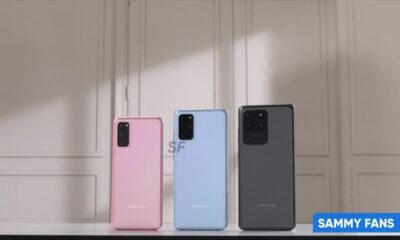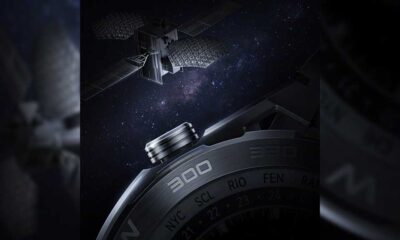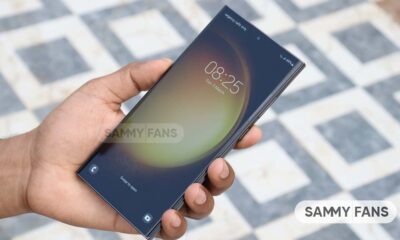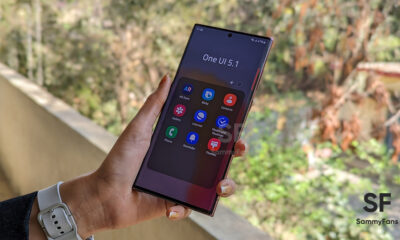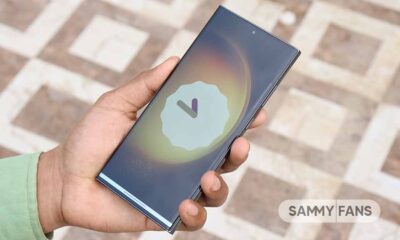Comparison
One UI 5 Quick Settings vs iOS 16 Control Center
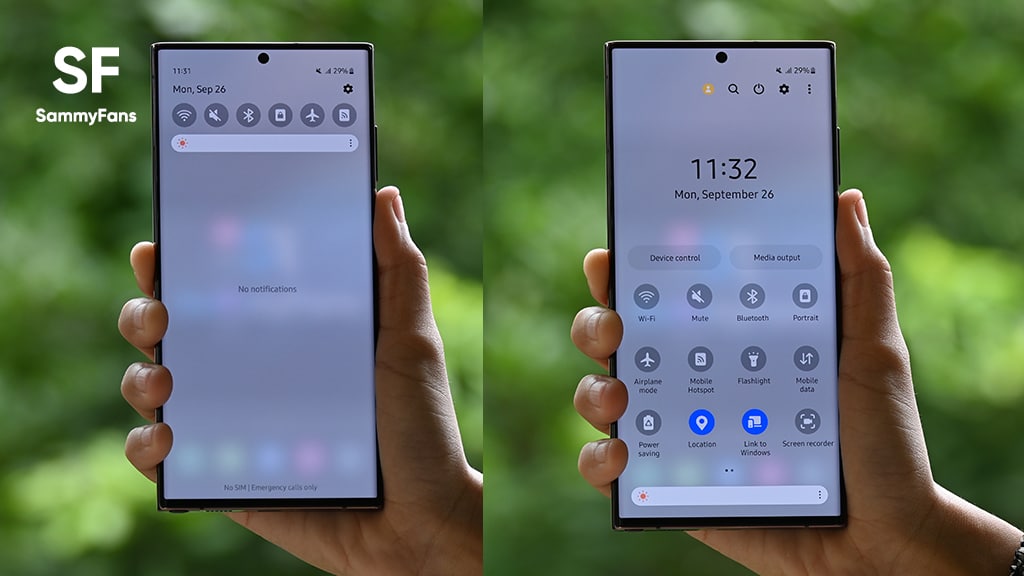
Numerous Samsung devices are currently running the latest Android 13-based One UI 5.0 software. On the other hand, Apple has already deployed the new iOS 16 operating system on eligible iPhones. Today, we are exploring One UI 5 Quick Settings and iOS 16 Control Center.
In mobile phones, Quick Settings and Control Center give you instant access to the things you do the most. Using this important feature of your phone’s operating system, you can quickly access crucial settings such as Wi-Fi, and mobile data, as well as display brightness through the slider.
Follow Sammy Fans on Google News
One UI 5 Quick Settings vs iOS 16 Control Center:
One UI 5 Quick Settings
With the One UI 5.0, Samsung greatly improved the visibility of Quick Settings interface. Since the overall layout and design is quite pleasant and well-placed, the Material You theming brings a completely optimized appearance.
With a single swipe down on the home screen, you can access the Notification panel and 6 primary quick setting toggles. However, if you swipe down again from the expanded interface, all quick settings toggles will be available.
Samsung’s One UI 5.0’s quick settings interface is highly customizable as we can change the place of toggles, add a brightness slider in the notification panel, and access device control and media output devices on the go.

iOS 16 Control Center
iOS 16 is the latest stable software system created by Apple. The company is currently bringing incremental updates, while the major iOS 16 updates already applied all changes.
Control Center of iOS 16 can be accessed by swiping down from the right edge of the iPhone, while the same operation from the left edge opens the Notification panel.
To make the overall look clean, iOS 16 brings toggles in divided sections; the first boxy layout includes 4 toggles – Airplane mode, mobile data, Wi-Fi and Bluetooth. Next, there’s a large media player UI, which can be enlarged with tap and hold.

Besides this, there are two toggles letting you enable/disable auto rotation and the screen mirroring shortcut, followed by the Focus tab that has DND and routines-like options for the users.
Next to these three buttons, the iOS 16 has large brightness and volume adjustment sliders. Both are easily accessible to right-handed users, while, users who are left-handed may face trouble reaching them.
Conclusion:
Since Android and iOS are totally different mobile operating system, Samsung managed to introduce the best quick settings panel on Galaxy devices. Apple, on the other hand, made the Control center neat and clean, but it has fewer options and fewer customization capabilities.
No doubt, we are with One UI 5!
Comparison
Samsung Galaxy S23 Ultra vs S22 Ultra: Camera Design
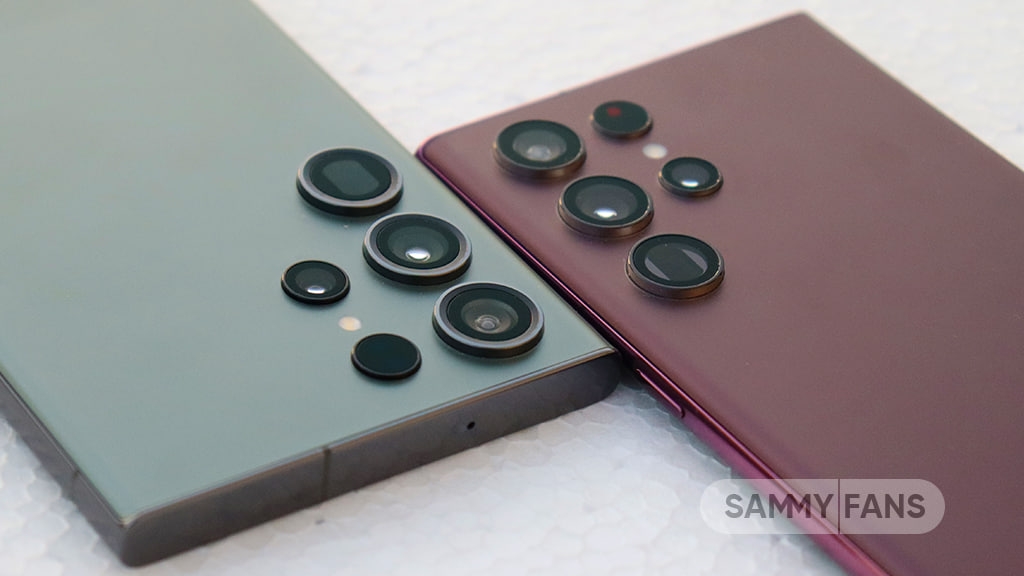
Samsung Galaxy S23 Ultra is a camera beast and brings a massive upgrade in features as compared to S22 Ultra but the design of this successor needs to be explored. In that case, we’ll have to do a comparison.
For your information, this comparison will look into the structure, layout, shape, lens count, and some key specifications of the rear camera module.
Design:
First comes the Galaxy S22 Ultra, which features a quad camera including a laser autofocus sensor and an LED flash. This system has two columns, the left side starts with a 12MP ultra wide-angle camera, followed by a 108MP wide-angle/main camera and the third one is a 10MP 10x periscope zoom camera.
The second column consists of a laser autofocus, an LED flash, and a secondary telephoto camera, capable of 3x zoom. Actually, the S22 Ultra resembles the S21 Ultra but without that large camera bump.
(Samsung Galaxy S23 Ultra – Left, Galaxy S22 Ultra – Right)
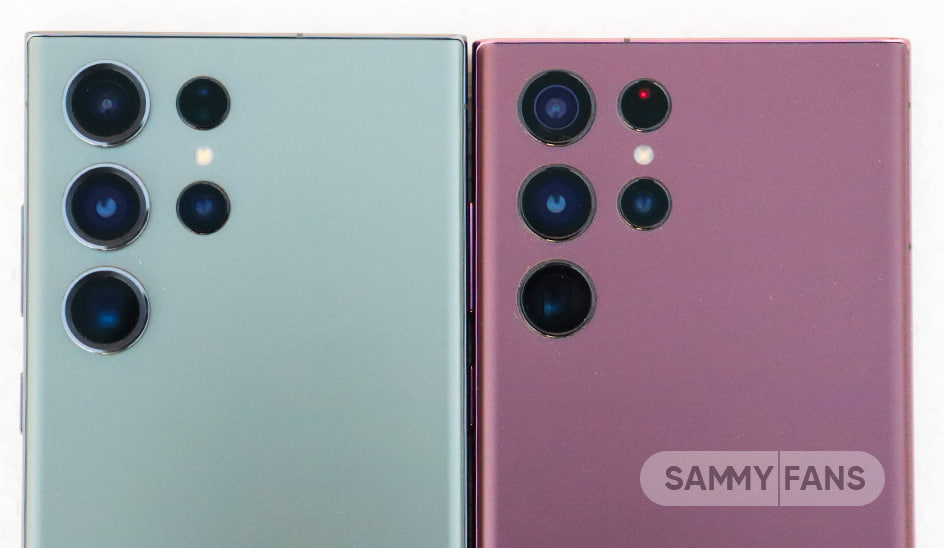
Successor?
If you look closely at the S23 Ultra, the difference between the camera structure and the aesthetics is barely noticeable. Because the Samsung Galaxy S23 Ultra willfully carries the camera design and layout from the S22 Ultra. Specifically, the first and second columns are identical in both devices. This is causing a variation in opinion among consumers who were expecting a major makeover.
Speaking of major, this flagship stands as a 200MP camera powerhouse. Using a super-resolution sensor, Samsung promises high-quality photography and robust optical image stabilization in videos.
Elegant Tweaks:
Aside from the layout and lens, Samsung Galaxy S23 Ultra brings a brand-new silver outsole ring. This tweak makes the entire module big, bulky, and elegant as compared to the past version.
In terms of appearance, this premium device strikes full marks for those new optimizations and it will definitely catch your eyes on the first look.
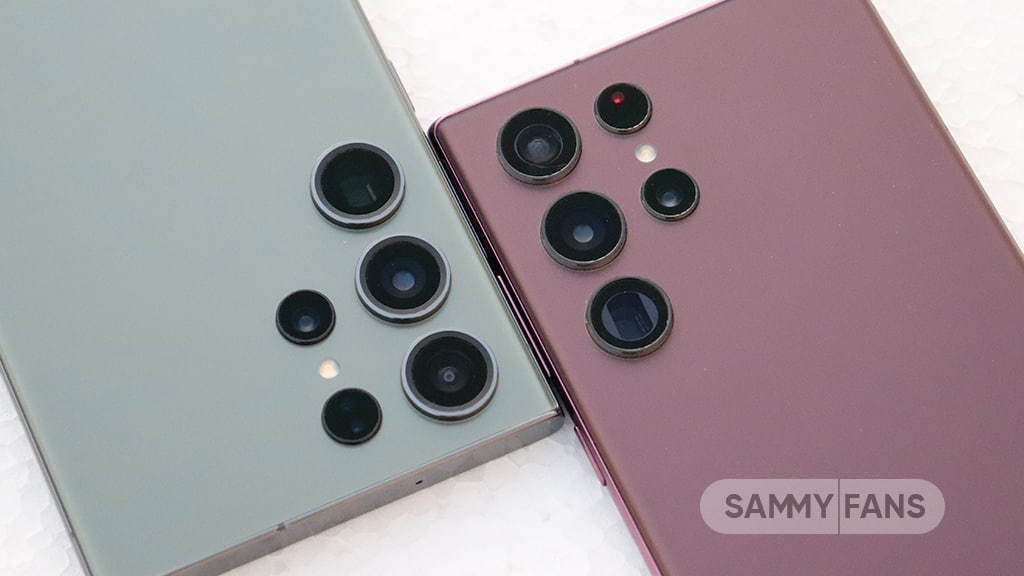
Comparison
Battery Widget – Samsung One UI 5.1 Vs Apple iOS 16
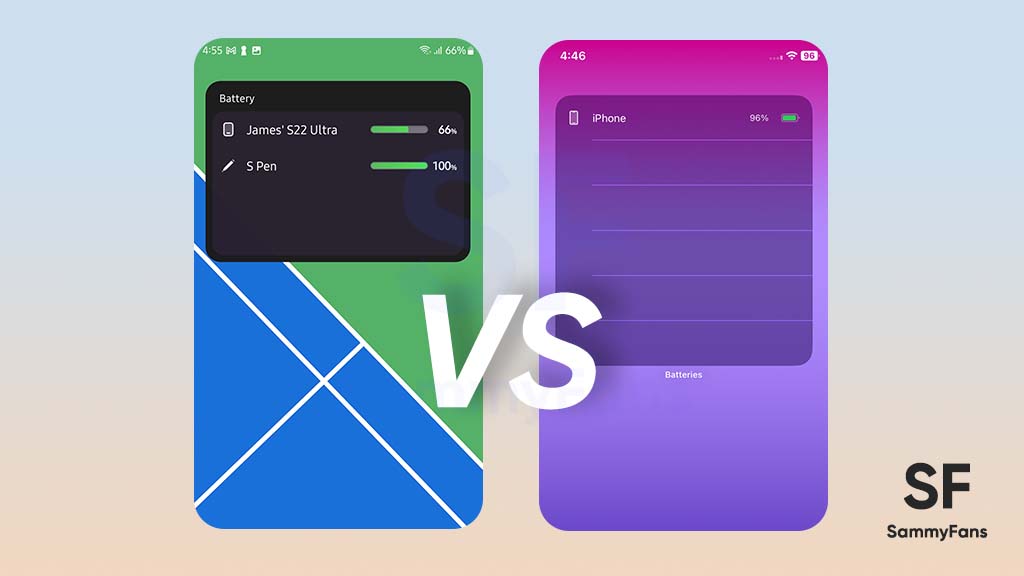
Samsung introduced a new battery status widget feature with the new One UI 5.1 software. Sadly, it’s not a new innovation as Apple’s iOS and Pixel’s Android already have such kind of widgets. Well, here we compare the battery widget of Samsung’s One UI 5.1 and Apple’s iOS 16 operating system.
Follow our socials → Google News, Telegram, Twitter, Facebook
Apple Battery Widget
Since Apple has already brought the battery status widget to iPhones, it has mastered the feature with generation improvements. In the latest iOS 16, there are three different battery widgets available on iPhones including a square (single), a rectangular (list), and a circular (4).
Samsung Battery Widget
Samsung’s battery widget introduces two choices for Galaxy consumers including the circular and square box styles. Both of the choices let you display the battery status of up to 8 devices including the smartphone itself. By default, the widget expands for 4 devices, which can be further enlarged for eight.

Comparison
One UI 5.1’s circular battery widget doesn’t have any background layer as all circles are arranged independently. On the flip side, iOS 16’s circular widget has a transparent layer so it can be clearly visible in any kind of wallpaper or home screen theme.
The One UI 5.1’s circular widget shows the device icon and percentage inside the circle, whereas the iOS takes additional space beside for percentage.
Talking about the second style, the rectangular widget of One UI 5.1 looks way better than the iOS 16’s. It has a solid background layer with an intuitive interface as well as a header, device icon, battery percentage bar, and text.
On the other hand, iOS 16’s rectangular battery widget keeps the same transparent background layer and occupies much space on the home screen. One UI can show the status of up to 8 devices, while iOS is limited to just 4.
Verdict
- Tied!
Apple’s battery status widget is unquestionably mature, compared to the first version of Samsung’s battery widget. Still, Samsung did a pretty good job when it comes to personalization of the widget and usability with a high amount of devices.
The circular widget of Apple looks better than the One UI, while the rectangular-styled widget of One UI clearly defeats iOS. It’s pretty difficult to make a winner in this comparison, as both have their own specialties and limitations. Well, which one do you prefer? Let us know through social media!
Comparison
Samsung Galaxy S23 Ultra vs Google Pixel 7 Pro – Fight for crown of Android
Samsung’s Galaxy S23 Ultra and Google’s Pixel 7 Pro are two of the best high-end Android smartphones available in the market. But which one to choose? Here’s a short comparison between these two Android kings.
The Galaxy S23 Ultra and Pixel 7 Pro look completely different, one has the vertical no-module camera set up while the other has a horizontal rear camera design.
Follow our socials → Google News, Telegram, Twitter, Facebook
The Galaxy S23 Ultra offers a bit larger display compared to the Pixel 7 Pro. Also, it is more durable as it uses Gorilla Glass Victus protection. On the other side, the Galaxy phone equips the world’s fastest Snapdragon processor made specifically for Galaxy.
When it comes to software, both phones drive Android 13 out of the box and support four major Android OS upgrades. Meanwhile, the Galaxy phone has some extra features that come with One UI 5.1.
The Camera and the camera features of Galaxy S23 Ultra is so good. It features a 200Mp camera and much improved nighttime photography. Whereas, the camera of the Pixel 7 Pro is also good to compete with the S23 Ultra.
For more information regarding the specifications of these phones, you can check out the comparison table mentioned below:
![]()
Samsung Galaxy S23 Ultra vs Google Pixel 7 Pro:
| Device name | Samsung Galaxy S23 Ultra | Google Pixel 7 Pro |
General
| Release Date | February 1, 2023 | October 6, 2022 |
| Dimensions | Height: 163.3 mm Width: 77.9 mm Thickness: 8.9 mm |
Height: 162.9 mm Width: 76.6 mm Thickness: 8.9 mm |
| Weight | 229 grams | 212 grams |
| S Pen | Yes | No |
Network
| Network Connectivity | 5G Compatible | 5G Compatible |
Processor
| Processor | Qualcomm Snapdragon 8 Gen 2 | Google Tensor G2 |
| CPU | 1×3.36 GHz Cortex-X3 & 2×2.8 GHz Cortex-A715 & 2×2.8 GHz Cortex-A710 & 3×2.0 GHz Cortex-A510 | 2×2.85 GHz Cortex-X1 & 2×2.35 GHz Cortex-A78 & 4×1.80 GHz Cortex-A55 |
| Operating System | Android 13 (One UI 5.1) | Android 13 |
| GPU | Qualcomm Adreno 740 | Mali-G710 MP7 |
Display
| Display Type | Dynamic AMOLED 2X | LTPO AMOLED |
| Screen Size | 6.8″ (120Hz) | 6.7″ (120Hz) |
| Screen Resolution | 1440 x 3088 px, 500 PPI | 1440 x 3120 px, 390 PPI |
Camera
| Rear Camera | Primary: 200MP Ultra Wide: 12MP Telephoto 1: 10MP Telephoto 2: 10MP |
Primary: 50MP Ultra Wide: 48MP Telephoto: 12MP |
| Front Camera | 12MP | 10.8MP |
Battery
| Battery Backup | 5000 mAh | 5000 mAh |
| Fast Charge | Wired: 45W | Wireless: 15W | Wired: 23W | Wireless: 23W |
Verdict: Samsung Galaxy S23 Ultra vs Google Pixel 7 Pro
- Winner – Galaxy S23 Ultra
It is a bit difficult to choose between these two phones as both are great. But since Samsung phones have some extra elements like One UI 5.1 features, Good Lock, Expert RAW, S Pen compatibility, 200MP camera, and advanced nightography, we would go for Galaxy S23 Ultra instead of Pixel 7 Pro.

